The Ultimate Stevia Leaf Microwave Dryer Machine Guide to 2024
Introduction to Stevia Leaf Processing Equipment
Stevia leaf processing equipment plays a pivotal role in the extraction and refinement of stevia leaf extract, a natural sweetener gaining popularity in various industries. The centerpiece of this equipment arsenal is the Stevia Leaf Microwave Dryer Machine, a sophisticated apparatus designed to efficiently dry and preserve the valuable components of stevia leaves.
Traditionally, stevia leaves were air-dried or sun-dried, which could lead to loss of flavor and nutrients. However, with advancements in technology, microwave drying has emerged as a superior method, ensuring rapid and uniform drying while retaining the natural sweetness and health-promoting compounds of stevia leaves.
The Stevia Leaf Microwave Dryer Machine consists of a chamber where the stevia leaves are placed for drying, along with a microwave generator that emits electromagnetic waves to penetrate the leaves and evaporate moisture. This process is controlled and optimized to achieve the desired level of dryness without causing degradation of the leaf's essential properties.
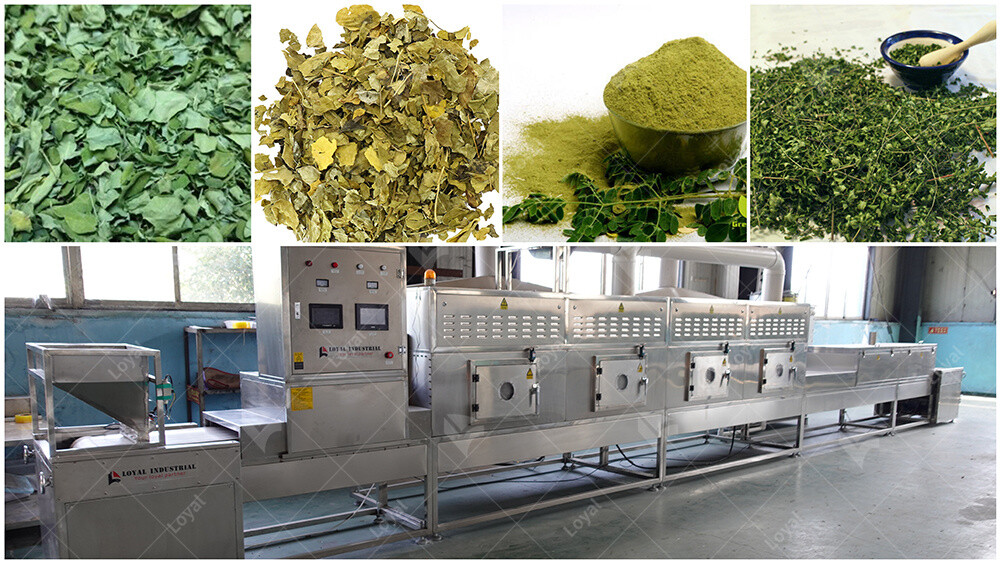
Evolution of Microwave Technology in Food Industry
The evolution of microwave technology has revolutionized the food industry, offering faster, more energy-efficient, and precise methods of food processing. Microwave technology utilizes electromagnetic waves to heat and cook food rapidly and uniformly, making it an indispensable tool in modern food processing facilities.
In the early days, microwaves were primarily used for heating and thawing food. However, as research and development progressed, their application expanded to include drying, pasteurization, and even sterilization processes. This evolution paved the way for the integration of microwave technology into specialized equipment like the Stevia Leaf Microwave Dryer Machine.
The adoption of microwave technology in the food industry has significantly improved efficiency and product quality while reducing processing time and energy consumption. It has enabled food manufacturers to meet the growing demand for healthier, minimally processed products, such as stevia leaf extract, without compromising on taste or nutritional value.

Understanding the Role of Dryer Machines in Stevia Leaf Processing
Dryer machines play a crucial role in the processing of Stevia leaves, ensuring the preservation of flavor, aroma, and nutritional integrity. The primary function of these machines is to remove moisture content from the leaves efficiently, prolonging their shelf life and maintaining quality. By employing advanced technologies like microwave drying, these machines offer rapid and uniform drying, preventing the degradation of Stevia's natural properties.
Stevia leaf processing involves several stages, including harvesting, washing, and drying. Among these, drying stands out as a critical step, as it directly impacts the final quality of Stevia products. Traditional drying methods, such as sun-drying or hot-air drying, often result in uneven drying and may lead to loss of flavor and nutrients. In contrast, microwave dryer machines offer a more controlled and efficient drying process, reducing processing time and maintaining product quality.
Microwave dryer machines utilize electromagnetic waves to heat the moisture within the Stevia leaves rapidly. This innovative technology allows for precise temperature control, ensuring uniform drying while preserving the delicate flavor and bioactive compounds of Stevia. Additionally, microwave drying minimizes the risk of contamination and microbial growth, meeting the stringent quality standards required in the food industry.
The efficiency of dryer machines in Stevia leaf processing directly impacts the overall productivity and profitability of manufacturers. By investing in high-quality microwave dryer machines specifically designed for Stevia processing, manufacturers can streamline their operations, reduce processing time, and achieve consistent product quality. Furthermore, these machines offer versatility, allowing manufacturers to adapt to fluctuating market demands and scale up production as needed.
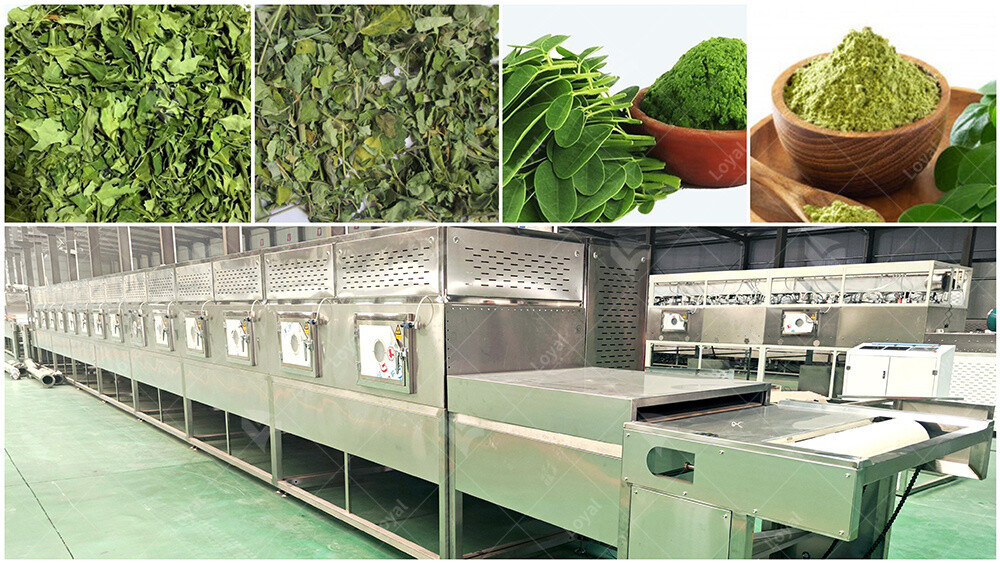
Types of Microwave Dryer Machines for Stevia Leaf
In the realm of Stevia leaf processing, various types of microwave dryer machines are available, each offering unique features and advantages. One common type is the batch microwave dryer, which processes Stevia leaves in discrete batches. This type of dryer is suitable for small to medium-scale production facilities, offering flexibility and ease of operation. Batch microwave dryers are ideal for manufacturers looking to maintain control over the drying process and experiment with different drying parameters.
Another type of microwave dryer commonly used in Stevia leaf processing is the continuous conveyor belt dryer. This type of dryer allows for continuous processing of Stevia leaves, enabling high-volume production with minimal manual intervention. Continuous conveyor belt dryers are well-suited for large-scale manufacturing operations, offering efficiency and scalability. Additionally, they feature advanced control systems that allow for precise adjustment of drying parameters to achieve optimal results.
In recent years, hybrid microwave dryer machines have emerged as a popular choice for Stevia leaf processing. These dryers combine microwave technology with other drying methods, such as hot air or infrared heating, to achieve faster drying rates and improved energy efficiency. Hybrid microwave dryers offer the best of both worlds, leveraging the advantages of different drying technologies to optimize the drying process for Stevia leaves.
Each type of microwave dryer machine for Stevia leaf processing has its own set of advantages and considerations, depending on the specific needs and constraints of the manufacturer. By carefully evaluating the features and capabilities of different dryer machines, manufacturers can select the most suitable option to optimize their production process and deliver high-quality Stevia products to consumers.

Key Features to Look for in Stevia Leaf Microwave Dryer Machines
When considering a Stevia Leaf Microwave Dryer Machine for your processing needs, several key features merit attention to ensure optimal performance and efficiency.
1. Microwave Power and Frequency: The power output and frequency of the microwave generator are crucial factors determining the drying speed and quality. Higher power and suitable frequency ensure faster and more uniform drying of Stevia leaves.
2. Control System: An advanced control system allows precise adjustment of parameters such as temperature, humidity, and drying time. Look for machines with user-friendly interfaces and programmable settings for efficient operation and consistent results.
3. Material and Construction: The construction material should be durable and resistant to corrosion, as the machine will be subjected to frequent cleaning and exposure to moisture. Stainless steel construction is preferred for its hygiene and longevity.
4. Safety Features: Safety is paramount in industrial settings. Ensure that the dryer machine is equipped with safety features such as automatic shut-off mechanisms, overheating protection, and emergency stop buttons to prevent accidents and ensure operator well-being.

Comparison of Stevia Leaf Microwave Dryer Machines from Leading Manufacturers
In comparing Stevia Leaf Microwave Dryer Machines from LOYAL and Heat and Control, several aspects come into play, highlighting their respective strengths and suitability for different production requirements.
Features | LOYAL Machine | Heat and Control Machine |
Microwave Power | 6 kW, 2450 MHz | 5 kW, 2450 MHz |
Control System | PLC control with touchscreen interface | HMI control panel with intuitive settings |
Material and Construction | Stainless steel construction | Combination of stainless steel and aluminum |
Safety Features | Automatic shut-off, overheat protection | Emergency stop button, fault diagnosis system |
Both machines offer reliable performance and advanced features for Stevia leaf drying. LOYAL's machine boasts slightly higher microwave power and a comprehensive PLC control system, ideal for large-scale operations requiring precise control. On the other hand, Heat and Control's machine provides a user-friendly interface and robust construction, making it suitable for smaller facilities with diverse product lines. Ultimately, the choice depends on specific production needs, budget considerations, and preferences regarding control systems and construction materials.
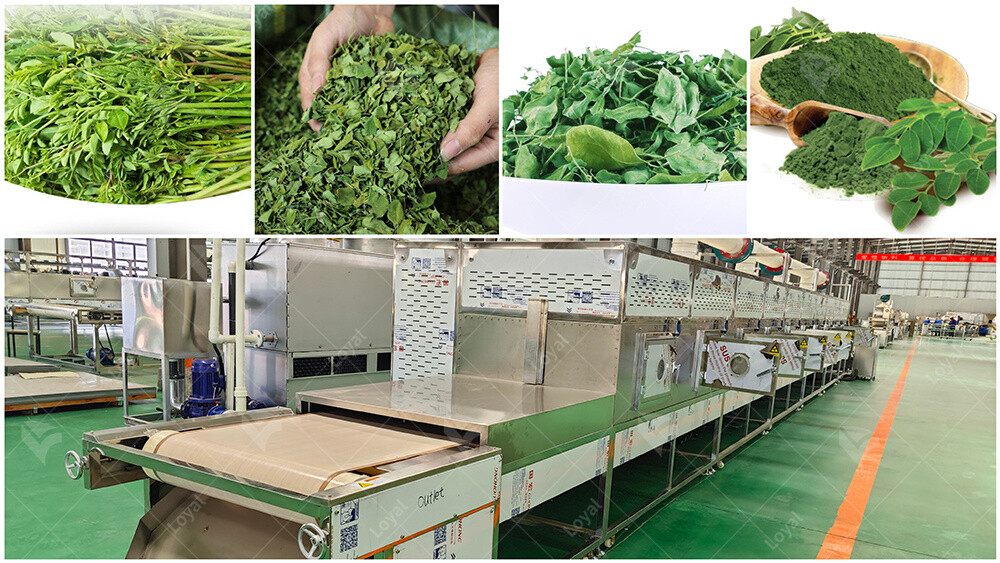
Benefits of Using Microwave Dryer Machines for Stevia Leaf:
Firstly, these machines provide rapid drying of Stevia leaves compared to conventional drying methods. The microwave technology allows for quick and uniform heating, reducing the overall processing time. This rapid drying feature is beneficial for maintaining the quality of Stevia leaves by minimizing exposure to heat and preserving their natural properties.
Secondly, microwave dryer machines enable energy efficiency in Stevia leaf processing. Unlike traditional drying methods that often require prolonged heating periods, microwave technology heats the material directly, reducing energy consumption. This energy efficiency not only contributes to cost savings but also aligns with sustainable manufacturing practices.
Thirdly, microwave dryer machines offer precise control over the drying process. These machines allow operators to adjust parameters such as temperature, humidity, and drying time with precision. This control ensures consistent results and enables optimization of the drying process for different batches of Stevia leaves, leading to higher product quality and yield.
Moreover, microwave dryer machines facilitate hygienic processing of Stevia leaves. The enclosed design of these machines minimizes the risk of contamination from external sources such as dust, insects, or pollutants. Additionally, the rapid drying process helps inhibit microbial growth, further enhancing the safety and shelf-life of the processed Stevia leaves.

Factors Influencing the Efficiency of Stevia Leaf Microwave Dryer Machines:
Several factors influence the efficiency of microwave dryer machines for processing Stevia leaves.
Firstly, moisture content plays a crucial role in the efficiency of microwave drying. Stevia leaves with higher moisture content require longer drying times, affecting the overall throughput of the machine. Therefore, maintaining optimal moisture levels in the input material is essential for maximizing efficiency.
Secondly, the uniformity of Stevia leaf size and thickness affects the efficiency of microwave drying. Uniformly sized and evenly distributed leaves allow for consistent heating throughout the batch, resulting in more efficient drying. Variations in leaf size and thickness can lead to uneven drying and may require adjustments in drying parameters to achieve desired results.
Thirdly, the design and configuration of the microwave dryer machine influence its efficiency. Factors such as chamber size, microwave power, airflow distribution, and control systems affect the heating and drying process. Machines with optimized designs and advanced control features can achieve higher efficiency by maximizing heat transfer and minimizing energy losses.
Moreover, operator expertise and maintenance practices are critical for ensuring the efficiency of microwave dryer machines. Proper training of operators in operating the equipment and optimizing drying parameters can enhance efficiency and productivity. Regular maintenance, including cleaning, calibration, and inspection of components, is essential for preventing downtime and maintaining peak performance.
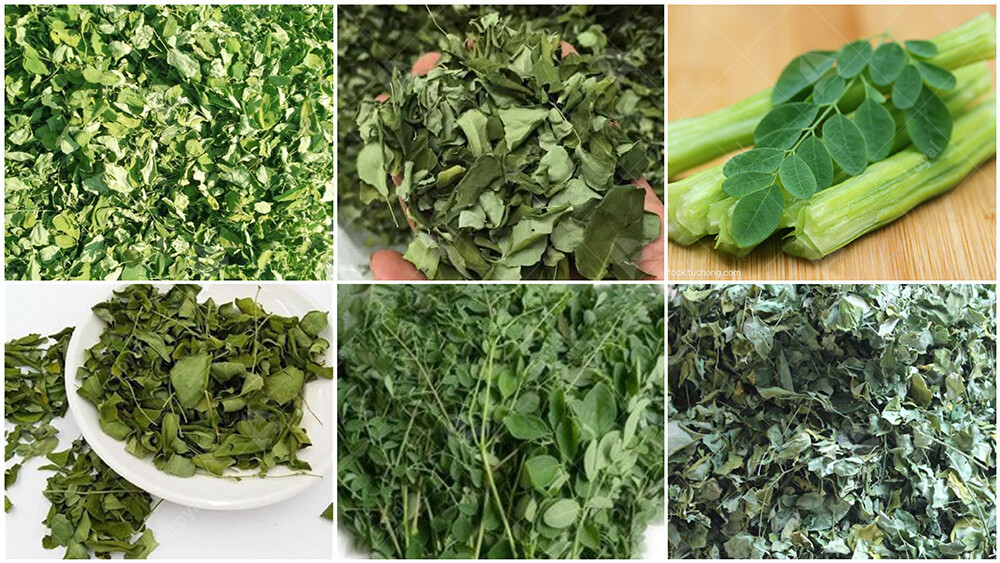
Maintenance and Care Tips for Stevia Leaf Microwave Dryer Machines
Microwave dryer machines for Stevia leaf processing are essential assets in the food industry, requiring regular maintenance to ensure optimal performance and longevity.
1. Regular Cleaning Procedures: One of the fundamental maintenance tasks for Stevia leaf microwave dryer machines is regular cleaning. This involves removing any residual Stevia leaf particles, dust, or debris that may accumulate inside the machine. Regular cleaning not only ensures hygiene standards but also prevents potential blockages in the system, which can affect the drying process.
2. Inspection of Components: Periodic inspection of various components of the microwave dryer machine is crucial for identifying any signs of wear and tear. This includes examining the conveyor belts, heating elements, fans, and control panels for any damages or malfunctions. Timely detection of issues allows for prompt repairs, minimizing downtime and ensuring uninterrupted operation.
3. Calibration and Adjustment: Proper calibration and adjustment of the microwave drying parameters are essential for achieving consistent and efficient drying results. Operators should regularly monitor and fine-tune parameters such as temperature, power settings, and drying time to optimize performance according to the specific requirements of Stevia leaf processing. Calibration ensures uniform drying across batches and prevents over-drying or under-drying of the leaves.
4. Scheduled Maintenance Routine: Establishing a scheduled maintenance routine is critical for proactive upkeep of Stevia leaf microwave dryer machines. This routine should include tasks such as lubrication of moving parts, replacement of worn-out components, and performance checks to ensure all systems are functioning correctly. Adhering to a maintenance schedule minimizes the risk of unexpected breakdowns and prolongs the lifespan of the equipment.

Future Trends and Innovations in Stevia Leaf Microwave Dryer Machine Technology
1. Integration of IoT and Automation: The integration of Internet of Things (IoT) technology into microwave dryer machines enables real-time monitoring of performance metrics and predictive maintenance. Automated systems can adjust drying parameters based on data analytics, optimizing energy consumption and product quality while reducing human intervention.
2. Enhanced Energy-Efficiency: Future innovations in microwave dryer machine technology will focus on improving energy efficiency to reduce operational costs and environmental impact. This may involve the development of more efficient heating elements, insulation materials, and control systems to minimize energy wastage during the drying process.
3. Advanced Drying Techniques: Researchers are exploring advanced drying techniques such as vacuum-assisted microwave drying and combined microwave-infrared drying to further enhance the efficiency and quality of Stevia leaf drying. These techniques offer faster drying rates and better preservation of nutrients and bioactive compounds compared to conventional methods.
4. Sustainable Design Practices: Manufacturers are increasingly prioritizing sustainable design practices in the development of microwave dryer machines, incorporating eco-friendly materials and energy-saving features. This includes the use of recyclable materials, energy recovery systems, and renewable energy sources to minimize the carbon footprint of Stevia leaf processing operations.
In conclusion, the future of Stevia leaf microwave dryer machine technology is characterized by innovation and sustainability, with ongoing research and development aimed at addressing current challenges and meeting the evolving needs of the food industry.
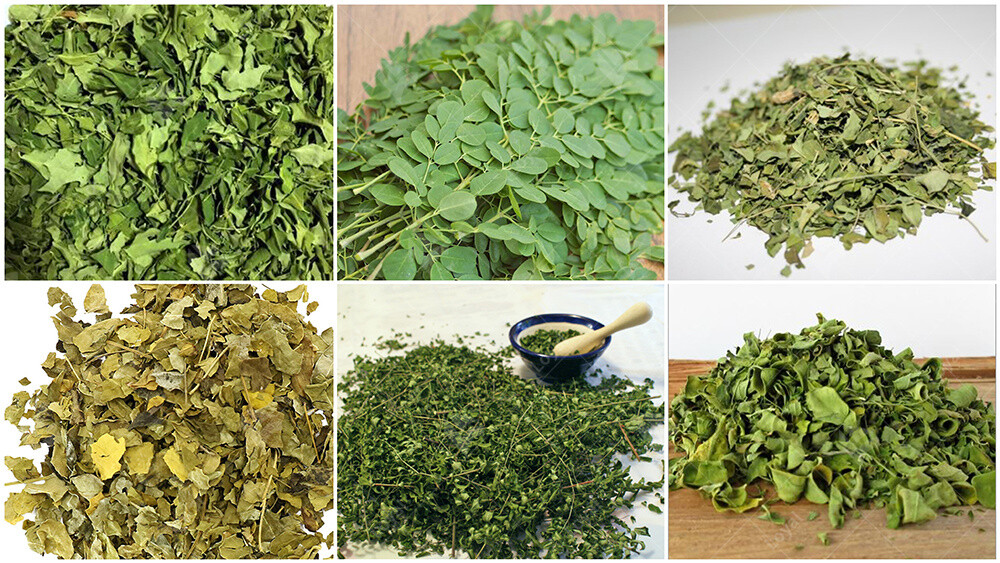
References
The following are five authoritative foreign literature websites in the field of industrial microwaves:
1. IEEE Xplore Digital Library
Website: [https://ieeexplore.ieee.org/]
2.ScienceDirect
Website: [https://www.sciencedirect.com/]
3. SpringerLink
Website: [https://link.springer.com/]
4. Wiley Online Library
Website: [https://onlinelibrary.wiley.com/]
5. PubMed
Website: [https://pubmed.ncbi.nlm.nih.gov/]
 Telephone :+86-531-55583139
Telephone :+86-531-55583139 WhatsApp :+86 13256674591
WhatsApp :+86 13256674591 Email :
Email :










